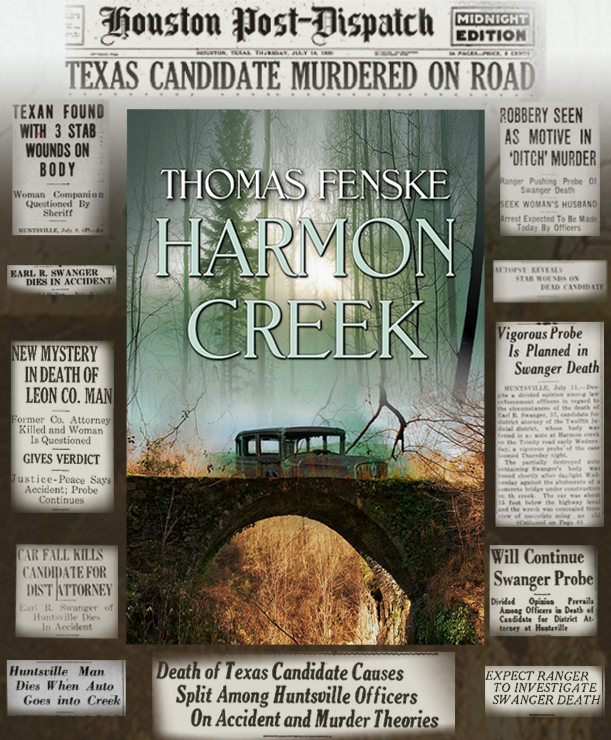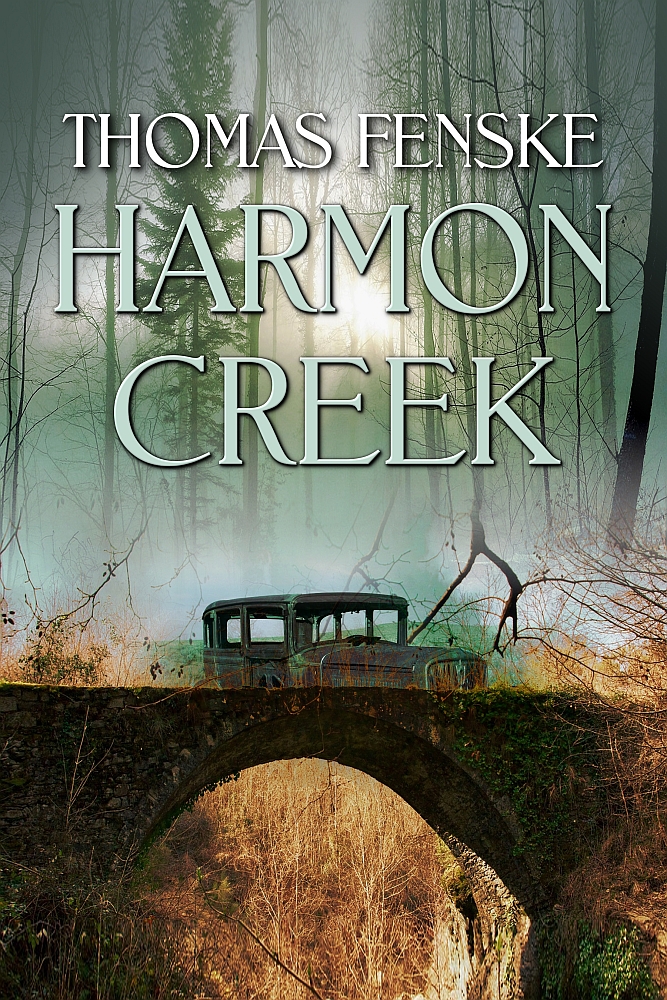The story behind the story
The basic premise of Harmon Creek revolves around the death of Earl Swanger, a Texas attorney seeking political office in 1930. His quest for the office of District Attorney was cut short when he ended up dead next to an under-construction bridge.
I first heard about this from my wife Gretchen. Earl Swanger was her great-uncle, he was the brother of her maternal grandmother. She grew up with stories about Earl, or Buddie as they called him. The family’s opinion definitely tended toward a politically motivated murder.
When I delved into the case by looking for existing newspaper accounts of the incident, I was surprised at the apparent flurry of these articles. The first headline that caught my eye was from the Bryan Daily Eagle, July 10, 1930:
HUNTSVILLE ATTORNEY, CANDIDATE FOR
DISTRICT ATTORNEY FOUND DEAD UNDER
BRIDGE, WAS STABBED, AUTOPSY SHOWS
That’s interesting enough, but let’s take a look at the accompanying article:
———————————-
HUNTSVILLE, July 10 AP
An autopsy performed on the body of Earl R. Swanger, 37, candidate for district attorney, found beneath his wrecked automobile, under the Harmon Creek bridge, revealed three stab wounds, officers announced late Wednesday.
Dr. J. L. Martin, who conducted the investigation, said one of the wounds was in the chest, one above the collar bone, and one on the shoulder. He said a large blood vessel had been severed by one of the cuts and that Swanger had bled profusely inwardly.
Dr. Martin said the wounds could have caused Swanger’s death.
The coroner’s verdict was withheld pending a further investigation in connection with Swanger’s death.
Swanger, who was formerly county attorney of Leon county had been electioneering in Trinity county and was en route home when he was killed, officers believed. At first, it was thought his car had plunged from the bridge accidentally.
HOUSTON, July 10 AP
A woman who left Huntsville Tuesday night with Earl R. Swanger in his car for Trinity was questioned late Wednesday at her home in Trinity by Sheriff N.L. Speer.
Swanger’s body, with three stab wounds, was found beneath a wrecked car near Huntsville this morning.
She said she had been to Huntsville on business, and had accepted Mr. Swanger’s invitation to ride back to Trinity with him.
She said that en route to her home a man who she knew drove up behind them, and that she decided to complete the trip with him instead of Mr. Swanger. She said that she got out of the car and that Mr. Swanger proceeded to Trinity.
She did not even know that Mr. Swanger was dead until informed by the sheriff, she said.
The county attorney’s force, headed by County Attorney R.T. Burns and Justice of the Peace R.J. Camp, in addition to Sheriff Speer and his deputies, are conducting a probe into the candidate’s mysterious death.
————————–
You can see that this story was pulled from the Associated Press news feed. I found many similar articles from small-town newspapers in the Texas area. The death of a political candidate was big news. It even got a huge headline in The Houston Post-Dispatch: TEXAS CANDIDATE MURDERED ON ROAD.
All the early articles had the same basic information: apparent stab wound along with a mysterious woman and man. By the next day, it was reported that the sheriff overruled the other county officials and pushed for the official explanation of the death to be ruled an accident. I think this was when I first started to realize that things were very fishy with this story. His reason? He said the wounds were caused by nails from the construction. This ruling was less than forty-eight hours after the death.
There were other details, to be sure, but they were inconsistent throughout the stories. In a couple, the woman claims she “didn’t kill him but if she could have she would have.” There was also a mention of a possible previous altercation with a man from Houston. I know enough about journalism to know that newswire articles were often embellished, especially at the time.
The most intriguing aspect of the story was how quickly it faded from the public eye. The story disappeared from the news less than two weeks after it was first reported. I mean, gone, disappeared, kaput, nada.
I’ve written murder mysteries, and this seemed to me to be a fertile ground to be explored. Don’t get me wrong, there’s a true story in there too, but I’m a novelist, not an investigative journalist. So, I dusted off my plot generator and percolated all the known facts into what I think is believable crime fiction: Harmon Creek.
More next time!

========================================
Thomas Fenske is a novelist living in North Carolina. Look for Harmon Creek in June, 2022.http://tfenske.com
